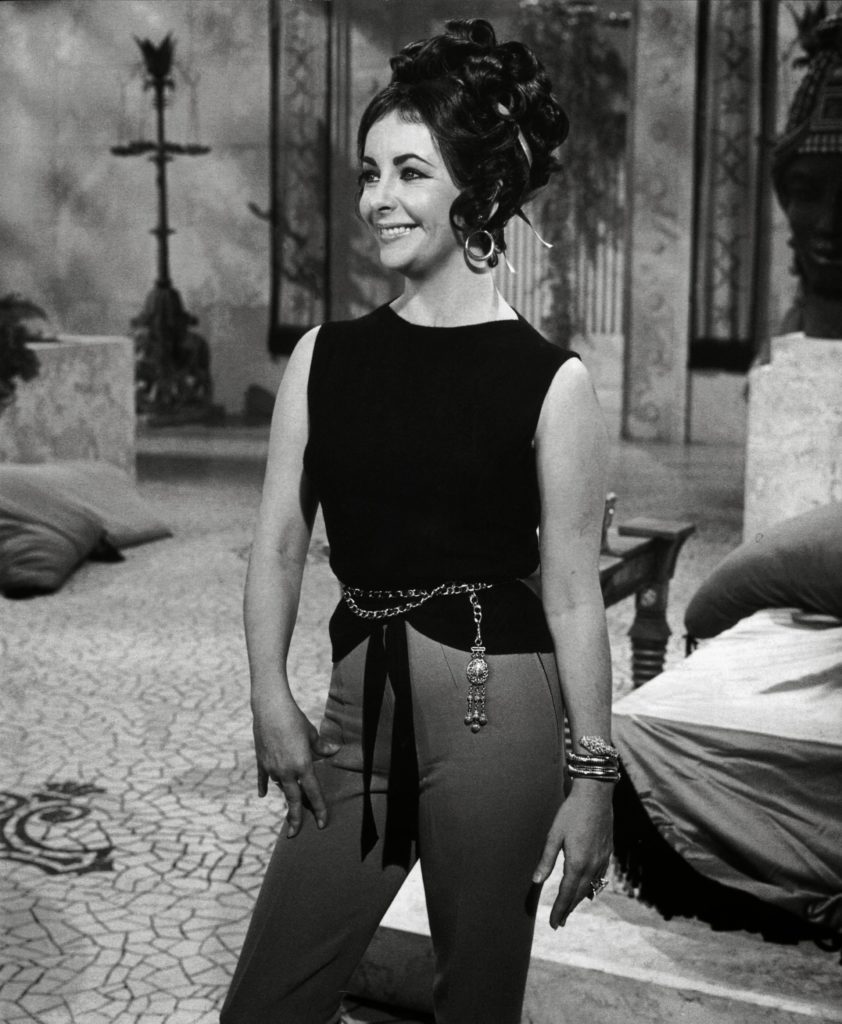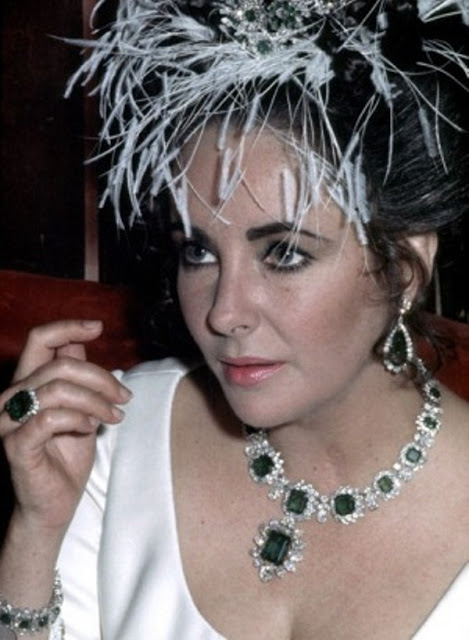When I think of Bvlgari (AKA Bulgari), I think of majestic jewelry worn by Mughal emperors and Indian Maharanis. The dramatic use of semi-precious and precious stones along with size and elaborate, intricate detail was a signified the status of nobility and royalty in an earlier time. When you see the diamonds, sapphires, emeralds and rubies of Bvlgari currently on display at the M.H. de Young Memorial Museum in an exhibit called The Art of Bvlgari: La Dolce Vita and Beyond you realize that time hasn’t changed much. The bigger the rock and the more elaborate the jewelry, the higher the implied status.
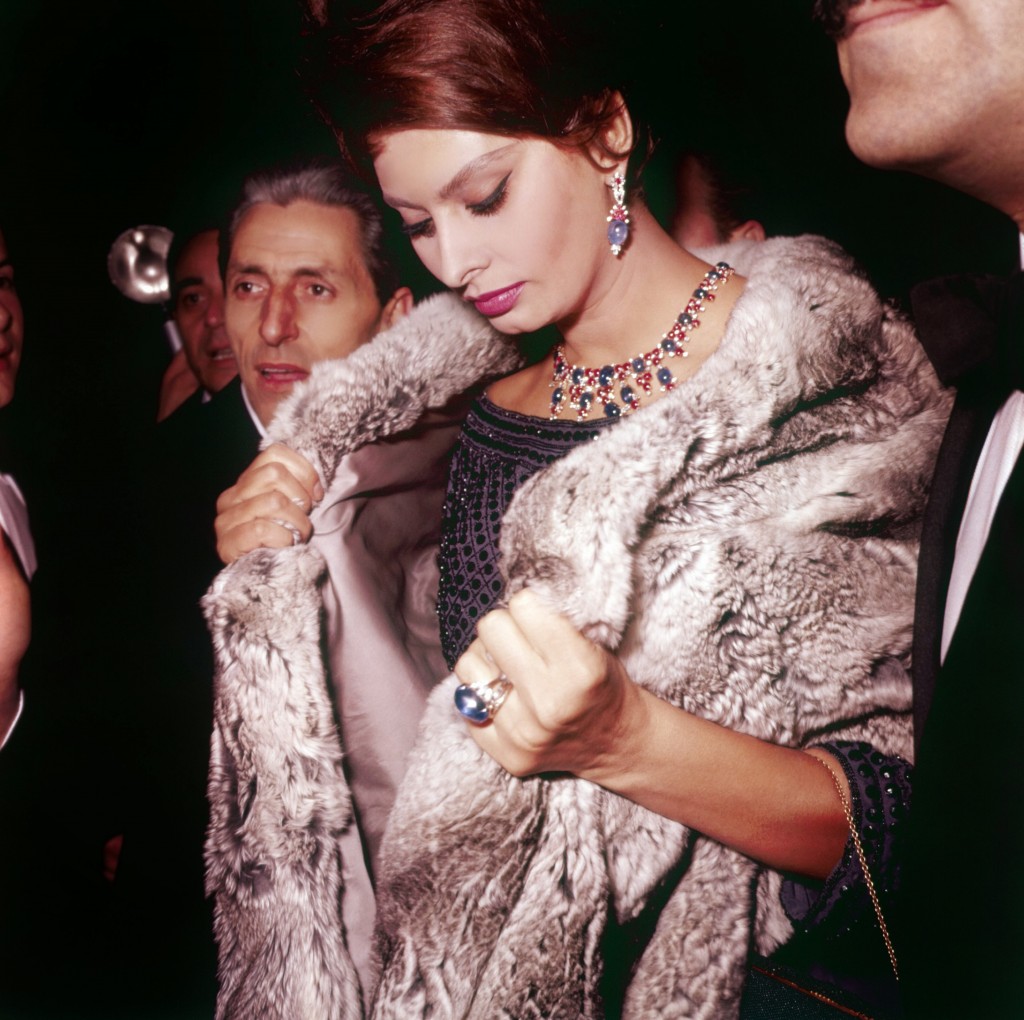
Sophia Loren in a Bulgari parure of cabochon sapphires and rubies highlighted with diamonds, 1960.
Photo: Archivi Farabola
Pictures of Elizabeth Taylor, Sophia Loren, and Ingrid Bergman dripping in the sparkle of Bvlgari jewels easily create the aristocratic nostalgia of Hollywood royalty. It isn’t hard to see why there is so much mystery and interest in the relationship of Elizabeth Taylor and Bvlgari. It’s also pretty easy to see why Bvlgari plays to audience thirst for both the celebrity and jewels. The story goes that Taylor refused to take off her jewels while filming and her snake bracelet was immortalized through the power of her desire for her jewels.
The famous Elizabeth Taylor necklace in platinum with emeralds and diamonds is an easy favorite.
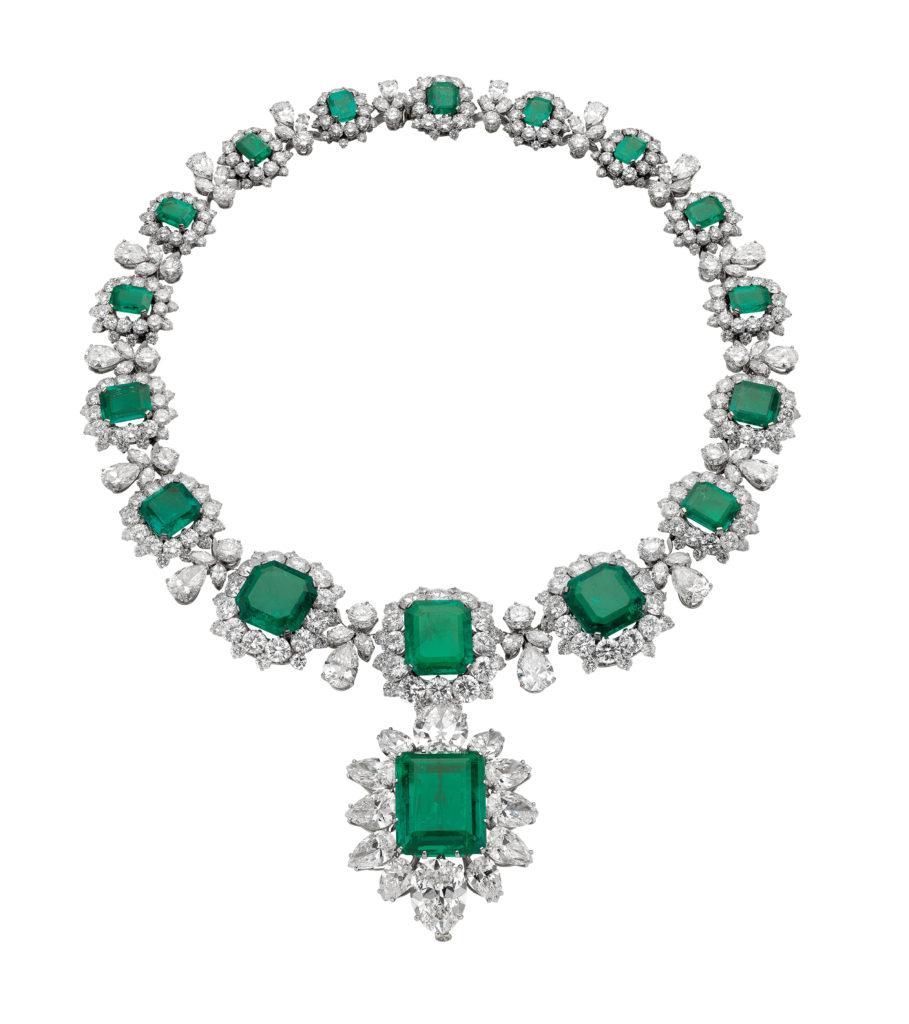
Necklace, 1962, with pendant/brooch, 1958
Platinum with emeralds and diamonds
Necklace: 37 x 2.7 cm. Pendant/brooch: 4.9 x 3.4 cm
Formerly in the collection of Elizabeth Taylor
Bulgari Heritage Collection, inv. 6676 N2169, 347870 P393 © Antonio Barrella Studio Orizzonte
And although jewelry is always a wonderful adornment, one can’t help but question fair trade and sustainability practices in the industry. I did a little digging and found that Bvlgari has some policies covering several of the areas related to responsible corporate practice such as the environment, bribery and corruption, ethics, human rights, stakeholder engagement and equal opportunities. It is also worth noting that I could not find a good supply chain standard policy as it does not exist as a part of Bvlgari’s ethics policy.
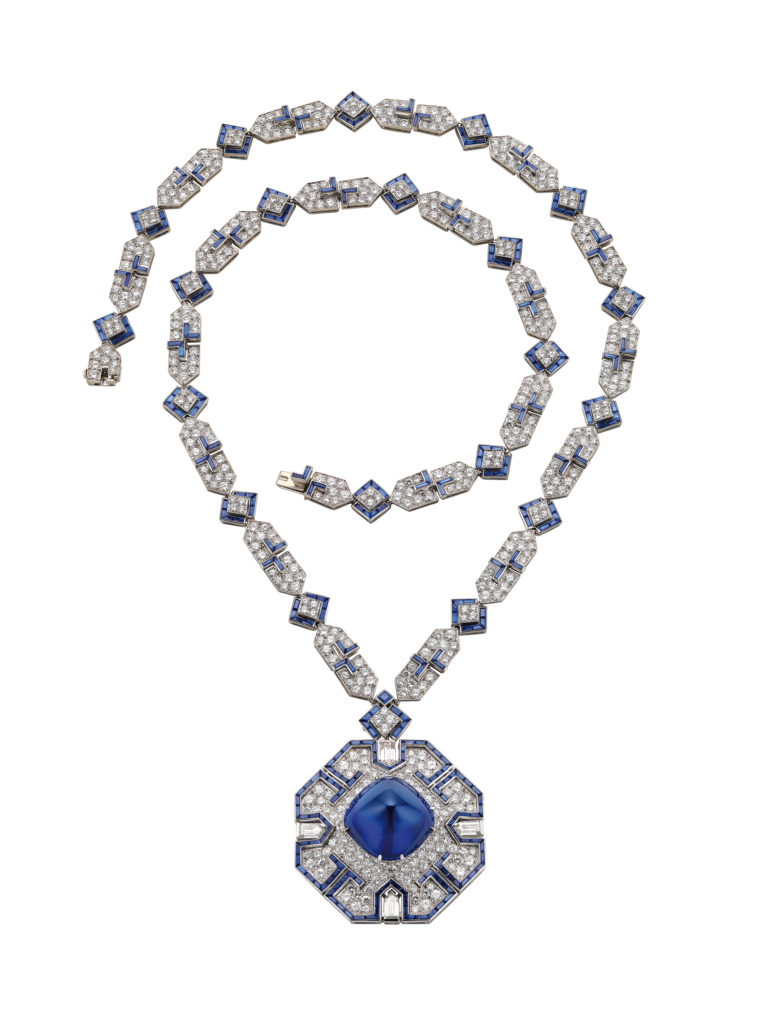
Sautoir, 1969
Platinum with sapphires and diamonds
Chain: 74 x 1 cm. Pendant/brooch: 4.9 x 4.9 cm
Formerly in the collection of Elizabeth Taylor
Bulgari Heritage Collection, inv. 6675 N2170 © Antonio Barrella Studio Orizzonte


